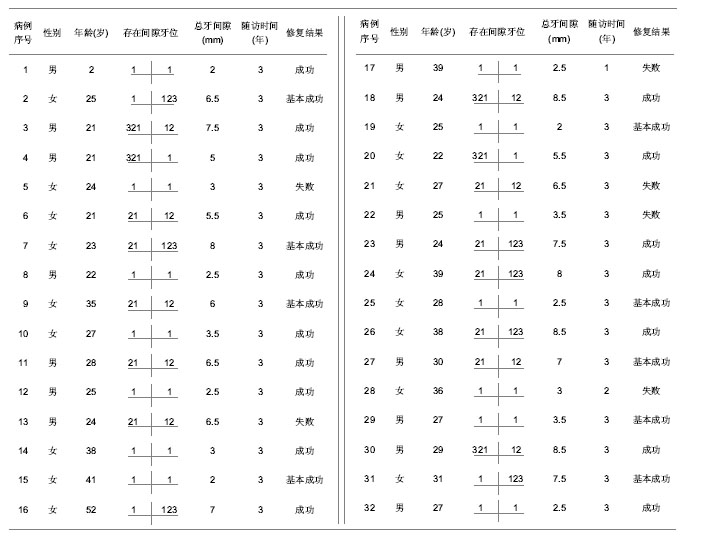中国组织工程研究 ›› 2013, Vol. 17 ›› Issue (42): 7481-7486.doi: 10.3969/j.issn.2095-4344.2013.42.022
• 生物材料临床实践 clinical practice of biomaterials • 上一篇 下一篇
光固化树脂材料充填上颌前牙过大间隙
张衍军1,刘克礼2
- 1武警学院医院口腔科,河北省廊坊市 065000
2北京市武警总医院,北京市 100039
Light-cured resin materials fill the oversized interdental space between maxillary anterior teeth
Zhang Yan-jun1, Liu Ke-li2
- 1Department of Stomatology, Hospital of Chinese People’s Armed Police Force Academy, Langfang 065000, Hebei Province, China
2General Hospital of Armed Police Forces, Beijing 100039, China
摘要:
背景:光固化树脂是一种新型材料,具有色泽美观、强度高、应用广泛、操作简便且价廉等特点。修复时不磨牙或少磨牙,患者乐于接受。 目的:观察光固化树脂充填上颌前牙过大间隙的效果。 方法:共收治32例患者,75个上颌大间隙,107颗牙齿;其中男15例,女17例;年龄21-52岁;牙位分别为双侧中切牙1个间隙,14例;双侧中切牙、左侧侧切牙、左尖牙3个间隙,3例;双侧中切牙、右侧侧切牙、右侧尖牙3个间隙,2例;左侧中切牙、侧切牙、尖牙和右侧中切牙、侧切牙4个间隙,3例;双侧中切牙和侧切牙3个间隙,6例;左侧中切牙、侧切牙和右侧中切牙、侧切牙、尖牙4个间隙,4例。均采用光固化树脂充填过大上颌前牙间隙。随访观察牙冠形态,密合度、颜色、磨损程度及松动度情况。 结果与结论:随访3年,32例患者中修复成功17例,树脂修得的牙冠形态及密合度良好,修复体不松动脱落,无任何变色;修复基本成功9例,修复的牙冠形态及密合度欠佳,修复体不松动脱落,但在龈缘处和牙体接触处修复体有缺陷,有轻度变色;修复失败6例,牙冠形态及密合度较差,修复体松动或脱落,修复体严重变色,需要重新修复。
中图分类号:
